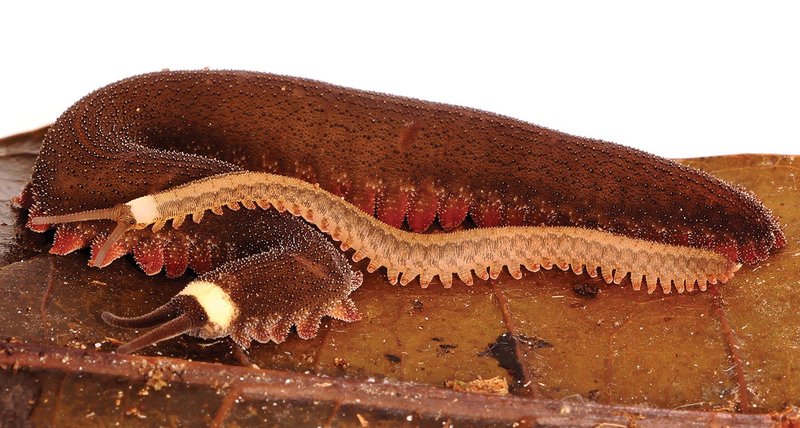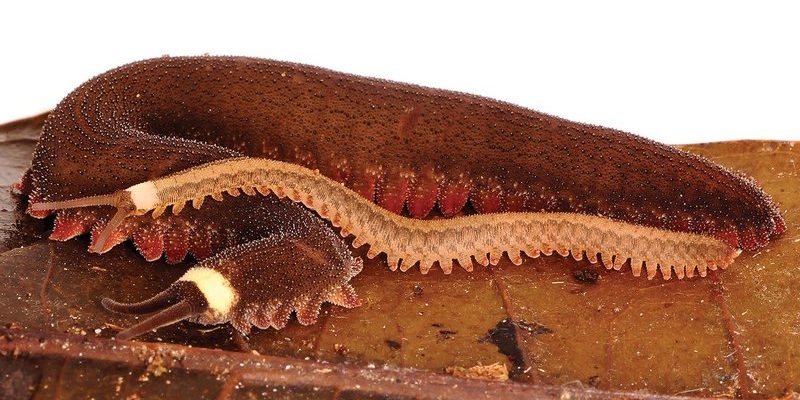
Now, you might wonder why these seemingly simple animals are so picky about where they live. Is it just because they like a cozy environment? Well, yes and no. Velvet worms have specific environmental requirements that dictate their survival and behavior. Understanding their microclimate preferences sheds light not only on their biology but also on the delicate ecosystems they inhabit. So grab your coffee, and let’s dive into the captivating world of velvet worms and their preferred living conditions!
What Are Velvet Worms?
Let’s start with the basics. Velvet worms, belonging to the phylum Onychophora, are fascinating creatures that inhabit humid environments around the world. They’re often found in tropical and subtropical regions, living primarily in leaf litter and under logs. Their bodies are covered in soft, velvety skin, which gives them their name. Imagine running your fingers over a plush piece of fabric; that’s how they feel!
These animals possess numerous legs—about 14 to 43 pairs—allowing them to move gracefully through their leafy homes. One of the coolest things about velvet worms is their unique method of capturing prey. They shoot a sticky, glue-like substance from special glands to ensnare insects and small invertebrates. It’s like nature’s very own trap-and-catch method!
The Importance of Microclimates
Now that you know what velvet worms are, let’s talk about microclimates. A microclimate is a small, specific area with distinct environmental conditions that differ from the surrounding area. Imagine a cozy nook on a rainy day; it may feel warmer and more protected than the chilly outdoors. Velvet worms thrive in these little niches within ecosystems, often found in humid, shady spots that provide the right balance of moisture and temperature.
Microclimates are crucial for velvet worms because they help regulate humidity, temperature, and light availability. These factors directly impact the worms’ behavior and survival. For instance, too little moisture can lead to dehydration, while excessive light can be harmful, making it essential for velvet worms to find their ideal spots.
Humidity: A Key Player
Humidity is a major factor in the lives of velvet worms. These creatures rely on high humidity levels to maintain their moisture balance. In fact, you might say they’re like little sponges soaking up moisture from the surrounding environment. Typically, they prefer humidity levels above 70%.
So, where do they find this optimal humidity? They love areas with dense vegetation, fallen leaves, and decaying wood, which can trap moisture and create a humid environment. On rainy days, you can often find them out and about, taking advantage of the moisture that the rain brings. Just think of them enjoying a spa day while everyone else is hiding from the downpour!
Temperature Preferences
Temperature, like humidity, plays a vital role in determining where velvet worms can thrive. These creatures prefer cooler temperatures, usually between 15 to 25 degrees Celsius (about 59 to 77 degrees Fahrenheit). Higher temperatures can be detrimental to their health, often leading to stress and dehydration.
The specific microclimates they inhabit usually have a mix of shade from trees and ground cover to keep them cool during warmer months. For example, a shady underbrush in a tropical forest is an ideal home, since it provides a cool, moist environment that’s just right for our little friends.
Microclimates and Predation
You might be wondering how microclimates help velvet worms avoid predators. It turns out that their habitat choices play a significant role in their survival. Being in a humid, cool environment not only keeps them hydrated but also offers natural camouflage against predators.
In these leafy jungles, predators like birds or reptiles might not spot them easily. The combination of dark, moist environments and their velvety appearance makes it challenging for hungry eyes to find them. So, not only do velvet worms thrive in their chosen habitats, but they also use these microclimates as a hiding place from potential dangers.
The Impact of Climate Change
Here’s the thing: climate change is affecting microclimates all over the world, and velvet worms are feeling the impact. As temperatures rise and humidity patterns shift, these creatures may struggle to find their optimal habitats. This disruption could lead to a decline in their populations, affecting the ecosystems they help maintain.
For instance, if the temperature in their preferred microclimates increases steadily, it may push them into less favorable conditions, leading to dehydration or increased predation. It’s a chain reaction that can disrupt the balance in their habitats and affect other species too. Understanding the microclimate preferences of velvet worms highlights their vulnerability in a changing world.
Conservation Efforts
The unique qualities of velvet worms and their specific habitat needs make them essential to the ecosystems they inhabit. Conservation efforts are crucial for preserving their habitats and ensuring their survival. Protecting the areas where they thrive, such as tropical forests and humid woodlands, helps maintain the delicate balance of these ecosystems.
Organizations focused on conservation often work to raise awareness and educate local communities about the importance of preserving these unique habitats. By creating protected areas and promoting sustainable practices, we can help secure a future for velvet worms and the vibrant ecosystems they help support.
In conclusion, velvet worms are remarkable creatures that rely heavily on specific microclimate preferences to thrive. By understanding their needs for humidity, temperature, and protection from predators, we can better appreciate their role in nature and the challenges they face in a changing world. The delicate balance of their habitats is crucial, and it’s up to us to take action to protect these hidden gems. So, next time you think about the creatures living in your backyard or nearby forests, remember the velvet worms and their fascinating life in the microclimates they call home.

